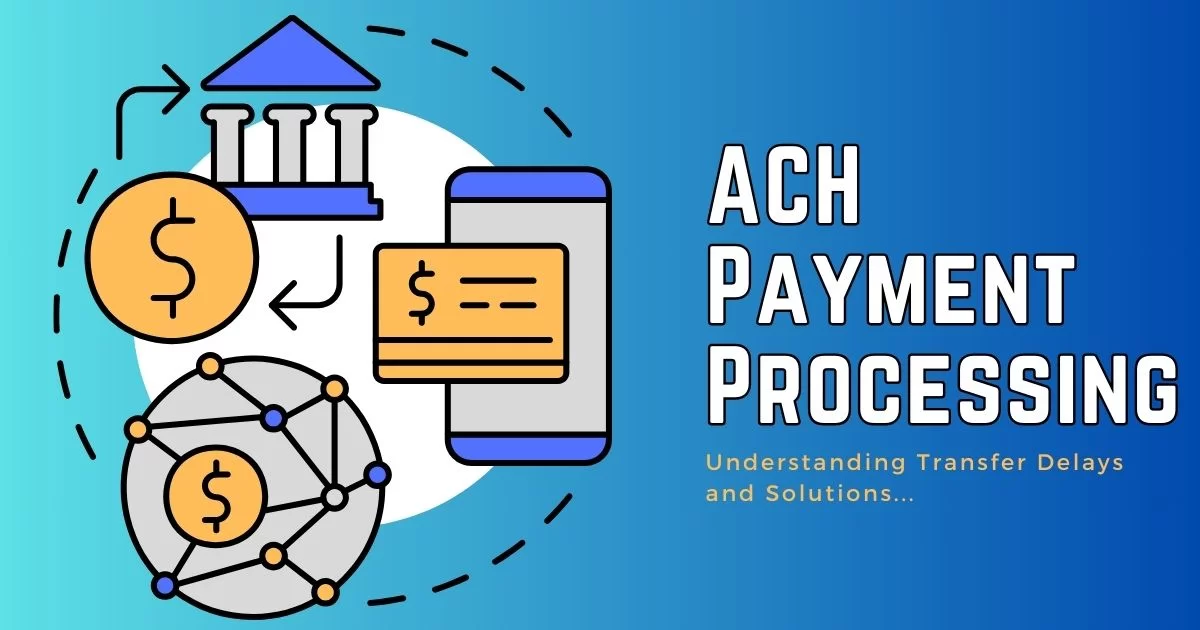
| September 24th, 2023 |
Understanding ACH Transfer Delays and Solutions!
When it comes to digital payments and money transfers, speed and efficiency are often top priorities. But if you’ve ever wondered why ACH transfer take time, you’re not alone. ACH, or Automated Clearing House, is a widely used method for processing electronic payments in the United States. While it offers many benefits, such as cost-effectiveness and reliability, it’s not always the quickest option.
In this article, we’ll demystify the process behind ACH payments and provide you with valuable insights on how to expedite them for faster transactions.
The ACH Payment Processing Process —
To understand why ACH transfers may not be lightning-fast, let’s take a closer look at the steps involved in the process:
1. Initiation: ACH transfers begin when a sender initiates a payment request. This request typically includes the recipient’s bank account information and the amount to be transferred.
2. Submission to the ACH Network: The payment request is then submitted to the ACH network, which acts as an intermediary between banks. This step involves routing the transaction to the recipient’s bank for processing.
3. Bank Processing: Once the recipient’s bank receives the transaction, they must verify the account information, ensure there are sufficient funds and complete other necessary checks. This can take some time, especially if there are discrepancies or issues with the request.
4. Settlement: After processing, the funds are transferred from the sender’s bank to the recipient’s bank. This step, known as settlement, can also contribute to delays, as it depends on the bank’s internal processes and schedules.
5. Notification: Finally, the recipient’s bank notifies them of the incoming funds, and the transaction is completed.
Factors Contributing to ACH Transfer Delays —
Several factors can lead to delays in ACH transfers:
1. Banking Hours: ACH transactions are typically processed during regular banking hours. If a transaction is initiated outside of these hours, it may not begin processing until the next business day.
2. Weekends and Holidays: Weekends and holidays can also affect the speed of ACH transfers, as banks may be closed or have limited processing capabilities during these times.
3. Verification Processes: The need for thorough verification processes, such as confirming account details and fund availability, can introduce delays, especially if issues arise during verification.
Tips for Speeding Up ACH Transfers —
While ACH transfers may not always be lightning-fast, there are steps you can take to expedite the process:
1. Plan Ahead: If timing is critical, plan your ACH transfers well in advance to account for processing delays.
2. Use Same-Day ACH: Consider using Same-Day ACH services, which are available for certain transactions and can significantly reduce processing times.
3. Verify Account Information: Ensure that all recipient account information is accurate to prevent delays due to verification issues.
4. Be Mindful of Timing: Initiate ACH transfers during regular banking hours to maximize efficiency.
In Conclusion —
Understanding why ACH transfers take time is essential for managing your digital payments effectively. While ACH offers advantages such as cost-efficiency and reliability, it’s important to factor in processing delays when planning your financial transactions. By following the tips mentioned above and staying informed about the process, you can navigate ACH payments with greater ease and efficiency.
In the realm of digital payments and ACH transfers, a little patience can go a long way. While ACH transfers might not be as swift as some other payment methods, their reliability and cost-effectiveness make them a valuable tool for businesses and individuals alike.
Understanding the intricacies of ACH payment processing and the factors contributing to delays allows you to make informed decisions. When time is of the essence, planning ahead and utilizing Same-Day ACH services can significantly expedite your transactions.
Moreover, ensuring the accuracy of recipient account information and initiating transfers during regular banking hours are simple yet effective ways to minimize delays.
In essence, while ACH transfers may take time, with a bit of foresight and the right strategies, you can harness the benefits of this payment method while keeping your financial transactions on track.
